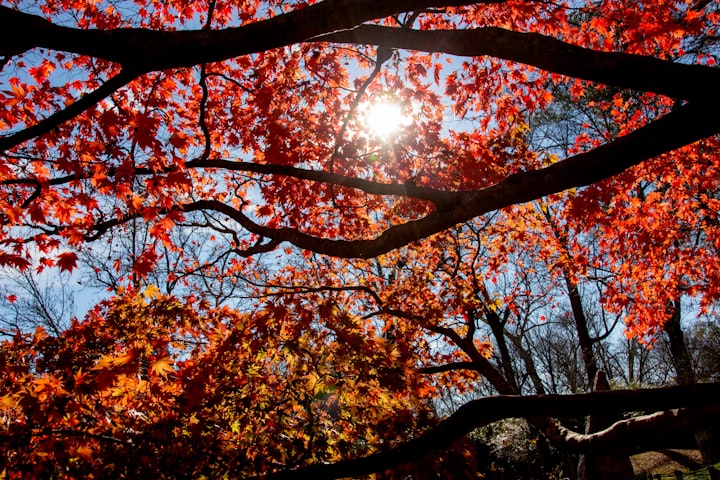
Canada, described as a maple country, has many beautiful landscapes, and Riding Mountain National Park is just one of them. With scattered leaves, the Canadian maple leaf looks beautiful and beautiful with fall colors. Canadian yellow gold map looks like a picture on a postcard.
Canada has a reddish-gold forest cover and more than 13 species of plums that look stunning. A maple leaf in a Canadian apartment has become a national symbol. The national flag not only bears the image of a maple leaf, but it is also a symbol of Canada's national identity and identity.
A red and white flag with a maple leaf-shaped was designated the Canadian national flag by Queen Elizabeth II in 1965. In 1965, the Canadian flag with the red maple leaf on the back of the white flag became the official Canadian national flag. The shape of the maple was not only used on the flags of the Pearson state but also became a national symbol.
With the launch of the Canadian flag in 1965, hoisted by George F.G. Stanley and sponsored by Representative John Matheson, the maple leaf became a central national symbol, using an eleven-style maple leaf to refer to a particular type of maple. Most of the maps in Canadas are actually located in Manitoba. The question of why Maple Leaf was chosen as the symbol of the Canadian flag has been answered by the fact that Sugar Maple has been used as an example of Maple Leaf in flag-building in eastern Canada.
On November 14, 1836, Le Canadien announced the Maple Leaf the Emblem of Lower Canada, and during the 1837 uprising activists from Lower Canada and Upper Canada showed Canadian expression. The maple leaf was first recognized as a Canadian symbol in 1859 when the Prince of Wales brought royal colors to the 100th Royal Canadian Regiment in England.
In 1860, at a public meeting in Toronto, Maple Leaf was adopted as Canadian armor and used as a decorative item during a visit to the Prince of Wales. In 1964, Prime Minister Lester B. Pearson chose the formation of the Maple Leaf in three submissions for the flag of George Stanley of the Royal Military College of Canada.
The Canadian national flag was adopted by the Canadian Parliament in 1964. On February 15, 1965, the North American national flag was unveiled in red with its undeniable and unique Canadian maple leaf. In a statement issued by Heritage Minister James Moore, the Maple Leaf tartan, worn and enjoyed for decades by Canadians, has never been made official.
A national symbol of its forests, lakes, and mountains is used in a Canadian apartment and in clothing. The flag represents Canada, indicates that it is a member of the Commonwealth of Nations, and symbolizes Canada's commitment to the British royal family. The white section of the flag is considered Canadian pale, and the border, the red section, is twice as large and has a red maple leaf in the middle.
The maple leaf has been a national symbol since at least 1868 when its red color was defined in World War I as a Canadian sacrificial symbol. Pearson's first flagship display featured three red leaves of a map in a white field with a straight blue line at the end. Green until 1957, when the leaves turn red, a common autumn color, after which the colors of the Canadian country are red and white.
One obvious reason that the Canadian red sign gained popularity was that it had a Canadian sign next to the Union Jack flag. In 1867 Alexander Muir composed the national anthem "The Maple Leaf," which became the official song of all English-speaking countries in Canada.
He wanted to make the Canadian flag one with Canadian symbols to promote Canadian unity, and to help protect Quebec's growing climate of segregation. The committee on a recent request to amend amendments to the proposed Pearson flag voted as a decision of the national flag committee. There was a red background with one 11-leaf maple leaf in a white square in the middle. After months of public debate with parliament, the result was adopted in December 1964 and the new Maple Leaf flag was officially launched on February 15, 1965, with the support of Canadians by the royal proclamation.
This document provides Canadian history and describes the events and debates that led to the launch of the modern Canadian flag with its trademark pages.
McDonald's Canada and Wendys Canada use maple leaf instead of the apostrophe with branded companies in their company to match the country's product and comply with the Quebec Official Language Act, where the French language does not use punctuation. The 11 points are not specified in the definition, because some Canadians say the number of Canadian countries, and the 10 at the end of the leaf symbol represent each province. It was also used as one of the symbols in the Pakistani provincial symbol Azad Jammu and Kashmir wrongly.
Appreciate the amazing beauty of the maple forest leaves and the red and orange leaves of gold and enjoy seasonal foods like cheese, cider, wine, honey, and maple syrup grown in the area. Plan a full holiday in Canada next fall to enjoy the autumn colors. Apple is accused of being a symbol of thornbushes in England and raping passersby.





Comments
There are no comments for this story
Be the first to respond and start the conversation.